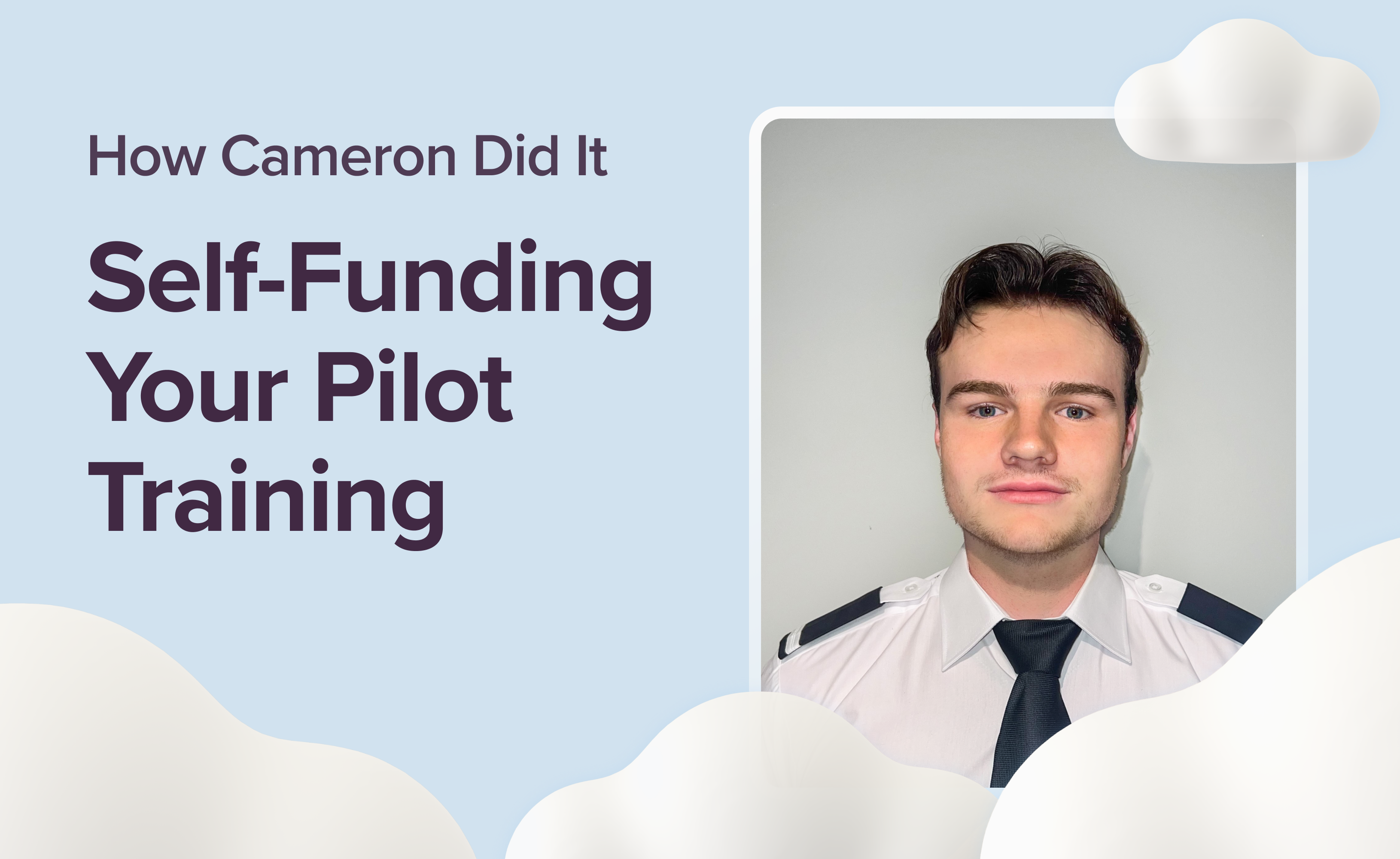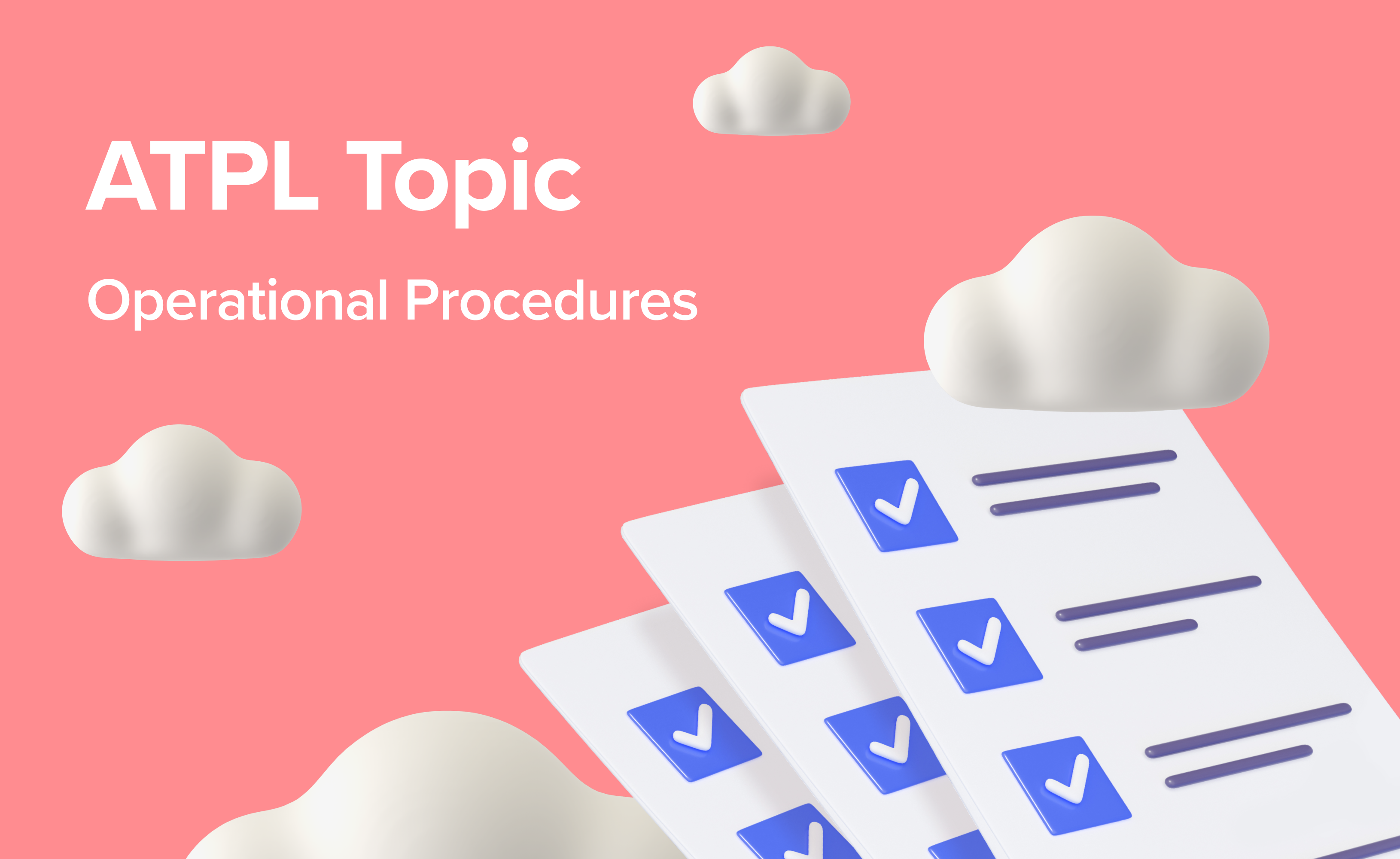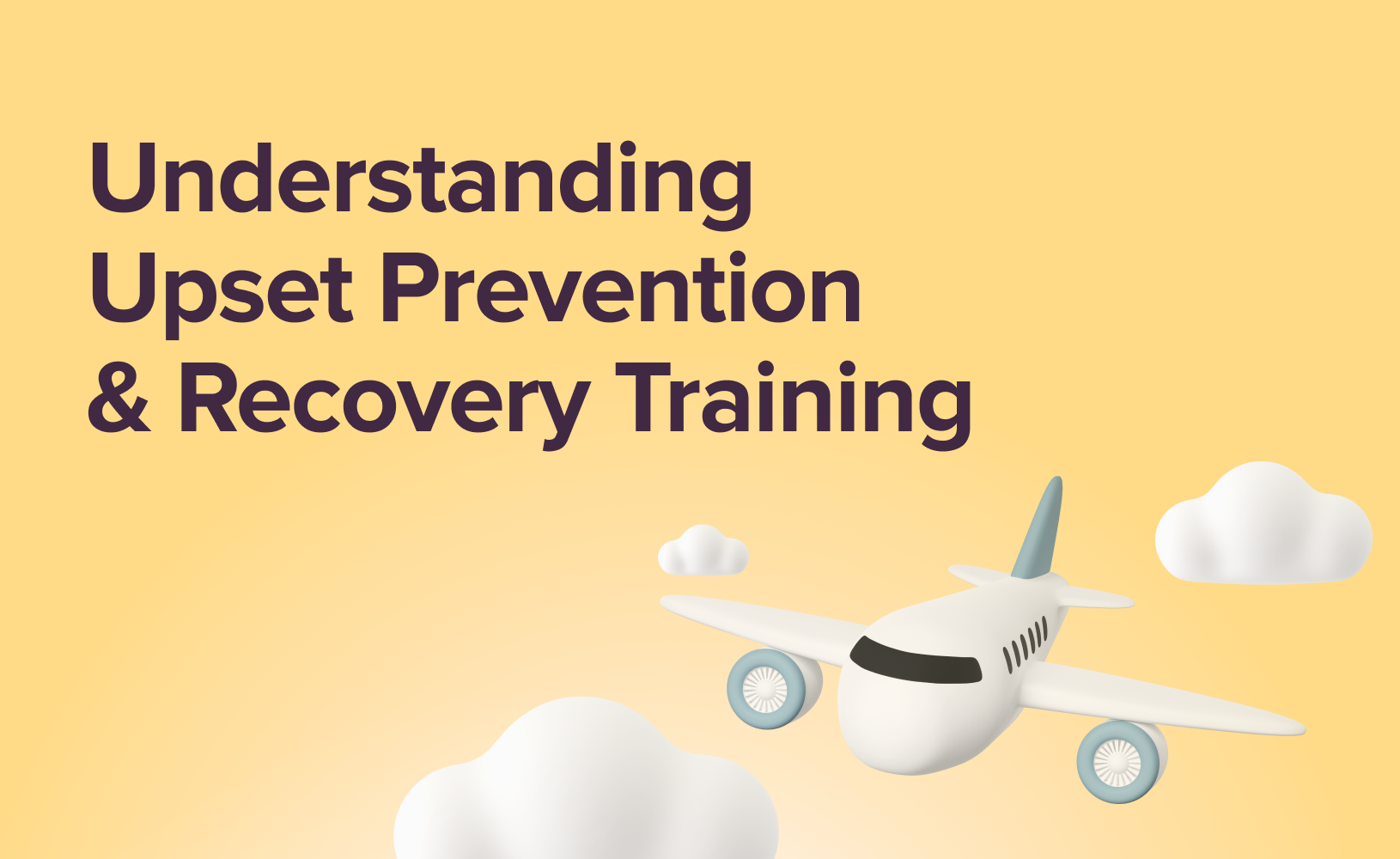Decision-Making: 8 Key Scenarios for Pilots

Decision-making is one of the most critical skills every pilot must master. Whether navigating complex European airspace, dealing with unpredictable local weather, or responding to in-flight challenges, good judgment can be the difference between a safe landing and a stressful flight.
But how do you develop such a vital skill? Practising real-world scenarios and using proven frameworks to guide your actions. This blog explores eight key scenarios you’ll encounter as a pilot and provides actionable advice to improve your decision-making abilities.
But first, let’s have a brief look at the roots of Aeronautical Decision-Making (ADM) and why it’s become a vital part of pilot training.
Develop the right mindset from day one — learn the Dirty Dozen to build safe, lasting pilot habits.
Roots of Aeronautical Decision-Making

Aeronautical Decision-Making (ADM) is a structured approach to the mental processes pilots use to determine the safest course of action in any given situation. It is the foundation of sound judgment, enabling pilots to make informed decisions based on the latest available information.
The concept of ADM began evolving in the 1970s when aviation safety organisations identified pilot error—frequently tied to poor decision-making—as a primary cause of accidents. In response, programs like Cockpit Resource Management (CRM) emerged to improve communication, teamwork, and decision-making under pressure. Airlines recognised that effective decision-making wasn’t just about individual skill but also relied on the efficient use of all available resources: people, equipment, and information.
ADM has become a fundamental aspect of modern aviation training, emphasising proactive risk management and systematic decision-making. Good judgment is no longer seen as the exclusive domain of experienced aviators. With ADM, you’re equipped to approach every flight with a systematic, safety-first mindset, ensuring a strong foundation for your aviation journey.
In the aviation industry, soft skills are equally vital as technical ones. Explore what soft skills are and why they hold hard value for your successful pilot career.
Common ADM Frameworks
ADM integrates conventional decision-making with tools like checklists, risk assessments, and proven frameworks. By breaking down decision-making into manageable steps, these frameworks help you maintain control, prioritise safety, and make informed choices under pressure. Let’s explore some of the most commonly used ADM models.

Aviate, Navigate, Communicate
This framework prioritises the critical tasks of flying, guiding pilots to focus on what matters most in high-stress scenarios. Prioritise flying the aircraft, knowing where you are, and communicating effectively.
For example: In an engine failure, establish the best glide speed and ensure the aircraft is stable before moving to the next steps. After stabilising the aircraft, identify a suitable landing area and plan your descent. Inform ATC of your situation and intentions after addressing immediate safety concerns
Master the art of communication for ATPL success. Explore the key topics covered in the syllabus, break down complex concepts, and test your knowledge with sample exam questions.
3-P Model (Perceive — Process — Perform)
The 3-P Model simplifies decision-making into three key steps, offering a systematic way to handle ADM tasks during all phases of flight. Perceive the situation, Process the information, and Perform the best course of action.
For example
During preflight, you note forecasted thunderstorms en route. In-flight, you perceive worsening weather conditions approaching your position. You process the weather data and assess whether to continue your planned route or divert to an alternate airport. After deciding to divert, you manoeuvre while continuing to monitor weather and flight conditions.
5P Model (Plan — Plane — Pilot — Passengers — Programming)
The 5P Model is a comprehensive risk management tool that continuously encourages pilots to monitor five critical areas during flight.
Plan: The mission, route, weather, and alternate plans.
Plane: Aircraft systems, fuel status, and maintenance.
Pilot: Your own health, experience, and stress levels.
Passengers: Their health, comfort, and potential influence on decision-making.
Programming: The use of onboard avionics and automation.
By reviewing these five factors, you can identify and address potential risks before they escalate.

OODA Loop (Observe, Orient, Decide, Act)
Originally developed for military strategy, the OODA Loop is a highly adaptable model for decision-making in aviation. Observe the situation, Orient yourself, Decide on a course of action, and Act on it. The OODA Loop is particularly effective for handling dynamic, fast-changing scenarios.
For example
Notice deteriorating visibility during your cross-country flight. Recognise that you’re approaching marginal VFR conditions and will need to act soon. Decide to divert to a nearby airport to avoid entering IMC. Divert to the alternate airport, maintaining situational awareness and communicating with ATC.
DECIDE Model (Detect — Estimate — Choose — Identify — Do — Evaluate)
The DECIDE Model provides a detailed, six-step approach for analysing and resolving in-flight challenges. Detect the problem, Estimate its severity, Choose a course of action, Identify the steps, Do it, and Evaluate the results.
For example
You notice your oil pressure is dropping. Determine if the pressure drop is critical or manageable. Decide to divert to the nearest airport. Plan the most efficient route to the alternate airport. Divert while monitoring oil pressure and other systems. Confirm your diversion is progressing safely and consider further contingencies.

8 Key Decision-Making Scenarios
As a student pilot, you’re taught from the start to mitigate risk by avoiding flights if even the smallest issue arises. While this is an essential foundation for safety, as you advance in your training, especially toward your commercial licence, you’ll discover that real-world flying isn’t always so black-and-white. The safest flight, after all, is one that never leaves the ground — but that’s not an option in operational aviation.
Through scenarios like these — often best practised in a simulator — you’ll learn to triage issues and make decisions based on the situation's context. When a failure occurs, ask yourself:
What’s the actual risk?
Can I continue safely with available resources?
What steps can I take to mitigate further issues?
Some scenarios fit multiple categories. For example, "Visibility suddenly begins to drop" involves both deteriorating weather and navigation challenges. This highlights the interconnected nature of decision-making in aviation.
Remember, the goal isn’t to teach you to push through every problem but to help you develop sound judgment. Sometimes the right decision will be to continue, and sometimes it will be to divert. Striking that balance — knowing when to press on and when to call it off — is the mark of a professional pilot.
1. The Go-Around Decision

This category covers situations where pilots must decide whether to abort a landing or manoeuvre. The focus is on recognising unstable conditions and acting decisively.
Scenarios:
On your take-off roll, your objective performance criteria are not met.
You return to the airport, and the crosswind has greatly increased.
You arrive at your destination airport and see a large X on the runway.
While practising take-offs and landings, you notice small clouds 600' below you.
Hurdle: Many students hesitate to initiate a go-around, fearing it shows failure or adds workload.
Make the Right Call: A go-around isn’t a failure—it’s a mark of good judgment. Examiners and instructors value pilots who prioritise safety over forcing a poor landing. Practice recognising when an approach isn’t stabilised and execute a smooth go-around to reset the situation.
Enhance your piloting skills and conquer crosswind landings with ease. Our blog offers valuable insights and practical advice to help you fly safely and efficiently in windy conditions.
2. Dealing with Deteriorating Weather

This involves recognising weather changes early and making decisions to mitigate risk, such as diverting, turning back, or modifying flight plans.
Scenarios:
Visibility suddenly begins to drop while you are in the practice area, and you’re no longer sure how to return to the airport.
While practising slow flight, the clouds start getting lower.
As you near your destination airport, you see a thunderstorm along your path.
It has been raining your entire flight, and you notice ice accumulating on the struts.
Before your flight, you notice some fog in the distance as forecast, but it looks fine at the airport.
Hurdle: Delaying the decision to divert or request assistance, often due to overconfidence or lack of experience.
Make the Right Call: Maintain control of the aircraft, find a safe course, and inform ATC of your situation. Practise reading METARs and TAFs to anticipate weather changes and develop a diversion plan before takeoff.
Learn to interpret weather patterns and make informed decisions with our beginner's guide to aviation weather forecasting.
3. Managing an Engine Failure

These scenarios deal with maintaining awareness of controlled and uncontrolled airspace, resolving potential conflicts, and avoiding restricted areas.
Scenarios:
There is another aircraft in the practice area who you think will be a conflict.
Someone else is in the circuit, but you cannot understand their radio calls.
The radio seems quiet—you haven’t heard anyone talk for 20 minutes on 26.7.
You hear someone encountering a problem on your frequency. What do you do?
You have a total electrical failure while VFR, and your nearest airport is towered.
An engine fails during climb-out or cruise, leaving you with limited time to react.
Hurdle: Freezing under pressure or neglecting immediate priorities like maintaining control and selecting a landing site.
Make the Right Call: Maintain control of the aircraft, establish the best glide speed, and select the safest landing site. Use your checklist methodically to troubleshoot, but always prioritise flying the plane.
4. Coping with an Instrument Failure
Scenarios in this category test a pilot’s ability to maintain situational awareness and flight safety when key systems fail, and troubleshooting is required.
Scenarios:
During your flight, the over-voltage light comes on.
In your run-up, the left mag drops 300 RPM.
You notice your radio shuts off and restarts when you press the transmit button. COM 2 fails shortly after.
Someone tells you your transmissions are “2 out of 5.” How do you troubleshoot?
Your elevator cable has snapped. How do you maintain pitch control?
Mid-flight, you lose a critical instrument like the attitude indicator or altimeter.
Hurdle: Over-reliance on instruments without practising manual alternatives.
Make the Right Call: Use backup instruments and visual references to maintain control. Communicate with ATC immediately for assistance and adjust your plan as needed. Practise partial-panel flying in simulators or training flights to build confidence.
Improve your flight training productivity. Read Pilot in the Making: Mastering Flight Training for expert tips and best practices.
5. Navigating Airspace Confusion

Scenario: While navigating busy European airspace, you approach a restricted or controlled area without clearance.
Hurdle: Struggling to interpret sectional charts and airspace rules, especially under pressure.
Make the Right Call: Familiarise yourself with local airspace structures like CTRs (Control Zones) and TMAs (Terminal Control Areas). Practise identifying entry requirements and radio procedures for each class. If unsure, ask ATC for clarification or assistance before entering the airspace.
6. Balancing Fuel Reserves and Diversions

This category addresses fuel management decisions, planning diversions, and acting early to ensure safety.
Scenarios:
On your cross-country, the headwind is significantly stronger than expected, and you’re burning more fuel than planned.
During turbulence, conditions pick up to moderate or strong levels. What do you decide about your destination?
Fuel unexpectedly runs low due to delays, miscalculations, or unforeseen weather.
Hurdle: Waiting too long to divert, hoping conditions will improve.
Make the Right Call: Develop a habit of planning alternate routes and calculating fuel reserves during pre-flight planning. Use the OODA loop to evaluate your fuel situation and act decisively if conditions require a diversion.
7. Responding to ATC Instruction Confusion

This involves handling misunderstandings or lack of clarity in ATC communications and knowing when and how to seek clarification.
Scenarios:
Someone tells you they cannot hear you clearly on frequency. How do you troubleshoot and resolve the issue?
You are about to make a call, but ATC doesn’t respond after multiple tries.
You mishear or don’t understand a clearance or instruction from ATC.
Hurdle: Fear of asking for clarification, leading to potential errors.
Make the Right Call: Stay calm and ask ATC to repeat the instructions. Use phrases like, “Say again for November 12345.” Controllers would rather repeat themselves than deal with a mistake caused by miscommunication. Practise ATC exchanges during simulator sessions to improve comprehension under pressure.
Improve your radio communication skills and enhance flight safety by reading our blog, Talking to ATC: 9 Common Communication Pitfalls to Avoid.
8. Handling Passenger Emergencies

This category involves responding to passenger issues, maintaining control of the flight, and ensuring the safety of all onboard.
Scenarios:
Your Uncle Bob is airsick in the back of the plane, and as you turn your attention outside again, you see you’ve flown into a cloud.
A passenger experiences a medical emergency, such as a panic attack, mid-flight.
Hurdle: Struggling to balance passenger needs with flying responsibilities.
Make the Right Call: Fly the aircraft first, ensure navigation is under control, and then communicate the situation to ATC for assistance. Know how to identify the nearest airports for an expedited landing and keep passengers calm while maintaining focus.
After each scenario, reflect on your choices. Did you assess the risks accurately? Was continuing the flight the right call, or should you have diverted sooner? These debriefs are where the real learning happens. You’ll begin to understand the nuances of decision-making, learning to weigh risks against operational demands while maintaining safety as your top priority.
Airhead's Takeaway

Decision-making is both an art and a skill, honed through practice and experience. Remember, every great pilot started as a student, learning to make the right call one flight at a time. Prepare, practise, and trust in your training—your best decisions are yet to come.
Through this process, you’ll build the confidence to handle unexpected situations. You’ll learn that not every failure requires a return to base, but you’ll also develop the judgment to recognise when continuing the flight becomes unsafe.
With practice, you’ll become the kind of pilot who can think critically, act decisively, and always prioritise safety—even under operational pressure.















































